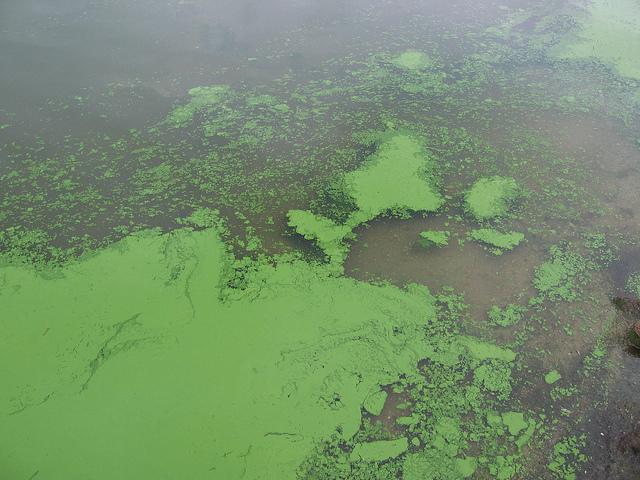There’s plenty going on in the outdoors, both good and not-so good

First some good news.
The Island Line Bike Ferry is plying the Cut, 200 feet of open water between Mallet’s Bay and the open lake, allowing pedestrians and bicycles to travel from Colchester to the Champlain Islands. Years ago, trains rolled between Rutland and Montreal, crossing a swing bridge that opened to allow boat passage. When the tracks were ripped up, the bridge, too, was removed. In 2005 Local Motion, a Vermont non-profit that advocates for active transportation and safe streets, began ferrying bikers and pedestrians across this gap. Today the Bike Ferry runs for about 100 days each summer. (Round-trip passage on the ferry costs $8 for adults.) This year however, the Town of Colchester plans to rebuild the Causeway. The last day of ferry operation will be September 2. Go soon or you will have to wait ‘till spring.
Why take the Bike Ferry? The Causeway beckons from anywhere along the Burlington Bike Path—Overlook Park in South Burlington, Oakledge Park in Burlington, downtown, or Airport Park in Colchester. With beautiful views of water and mountains, the Causeway extends for a total of 10.9 miles; over the lake it sits on marble pilings. On the far side of the Cut the Champlain Islands stretch as far as you want to pedal. Fuel up on maple creemees in South Hero at either Allenholm Farm or Seb’s. The Island Line Trail map, available on the ferry, details a range of eating options within a five-mile radius of the ferry.
The Bike Ferry website notes, “little black creatures” scamper around the Causeway. These are mink, a semiaquatic species in the weasel family. Minks are larger and heavier than weasels, reaching up to 30 inches in length and weighing as much as 2.2 pounds; they also have webbed feet! Like weasels and otters, mink have the sharp teeth of a predator, enjoying a diet of fish, frogs and crayfish during summer months. Keep an eye out for them as you pedal.
Now for the not so good news: cyanobacteria in lakes and ponds.
Sometimes referred to as blue-green algae, cyanobacteria are not algae but photosynthetic bacteria that can occur in both fresh and salt water. Large accumulations are called blooms, some of which produce toxins when they die and break down. It’s not possible to tell by looking if toxins are present, hence the need for lake monitors.
Lake Champlain Committee, a Burlington-based non-profit, trains monitors who test the water and report findings to the state. “Monitors learn what to look for in cyanobacteria blooms,” says Sandi Detwiler who has monitored lake water off of Flat Rock Road on Thompson’s Point for about five years. “We file weekly online water quality reports with the Vermont Department of Health. If we see something unusual in the water we file a supplemental report.”
Cyanobacteria thrive in water with high amounts of nutrients like phosphorus and nitrogen. The bacteria can multiply quickly to form dense populations, especially during warm, still days. Shallow, nutrient-enriched areas such as Lake Champlain’s Missisquoi Bay and St. Albans Bay are more vulnerable to blooms, but they can develop anywhere.
UVM Medical Center HealthSource notes that cyanobacteria are generally not harmful unless ingested. Dogs don’t understand that, and children are more likely than adults to swallow water while playing or swimming.
Cyanobacteria can form colonies that look like tiny fuzzy balls, streaks and striations, pea soup or spilled paint. They can make the water look blue-green, dark or bright green, turquoise, white, brown, red or purple. “This is the first summer that I have reported a low-level cyanobacteria event off of Flat Rock,” Sandi says. “Recent hot, calm conditions are ideal for the bacteria to develop. Generally, when wind and wave action increase, the cyanobacteria are dispersed. After noting the cyanobacteria on a calm morning, I have found that by mid-afternoon the water was for clear and fine for swimming. I advise folks to look carefully at the water before jumping in. Water that looks like pea soup could be unsafe,” Sandi says, “especially for dogs and young children. Stay out of the water until it clears.”
Contact Lori Fisher at the Lake Champlain Committee, to learn about the annual training for monitors.
On a more positive note, mark your calendar for early September to observe raptor migrations from Mt. Philo. One of the best locations in the state along this major migratory pathway, Mt. Philo is an excellent viewing point. Three groups of raptors—falcons, accipiters, and buteos—float by using air currents along the ridge of the mountain. While different groups fly at different times, some migrate as early as the first week of September.
Happy late summer!

